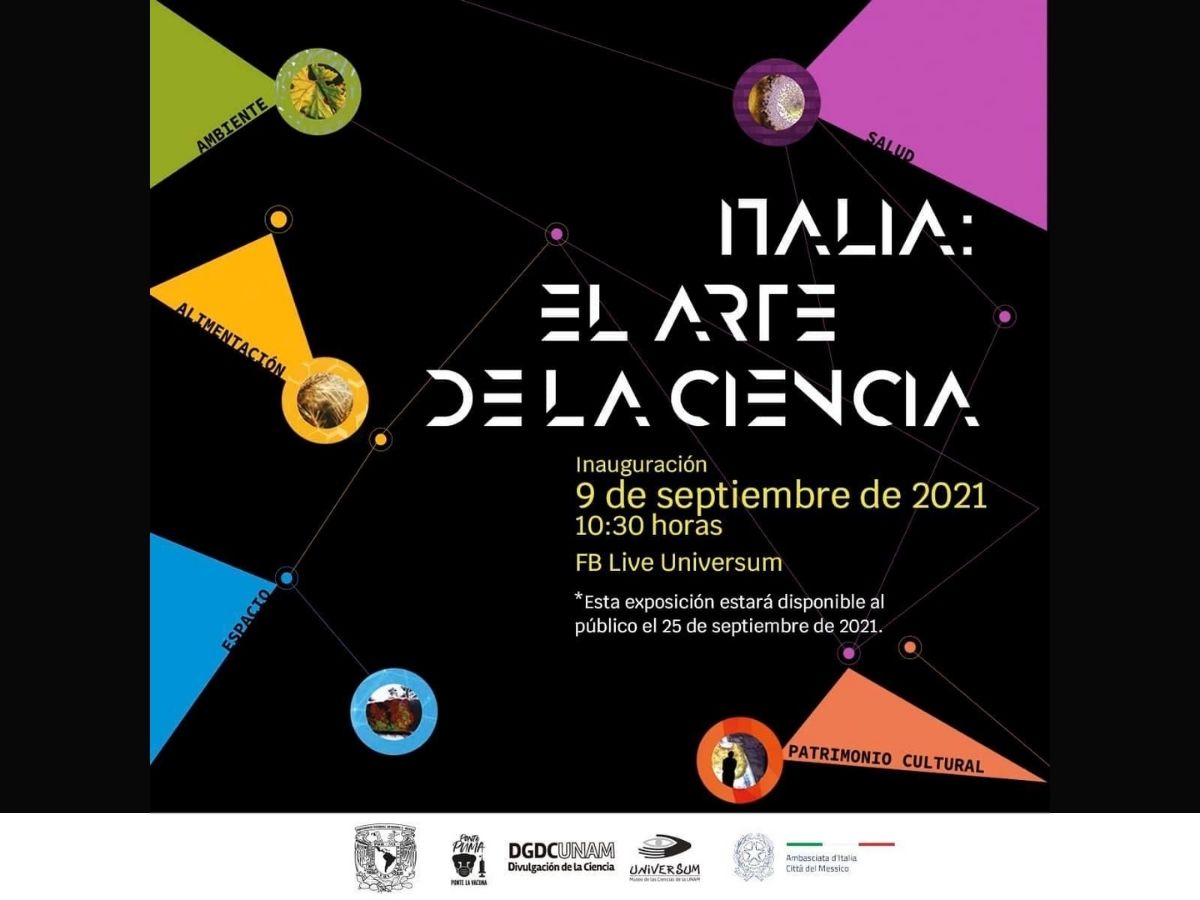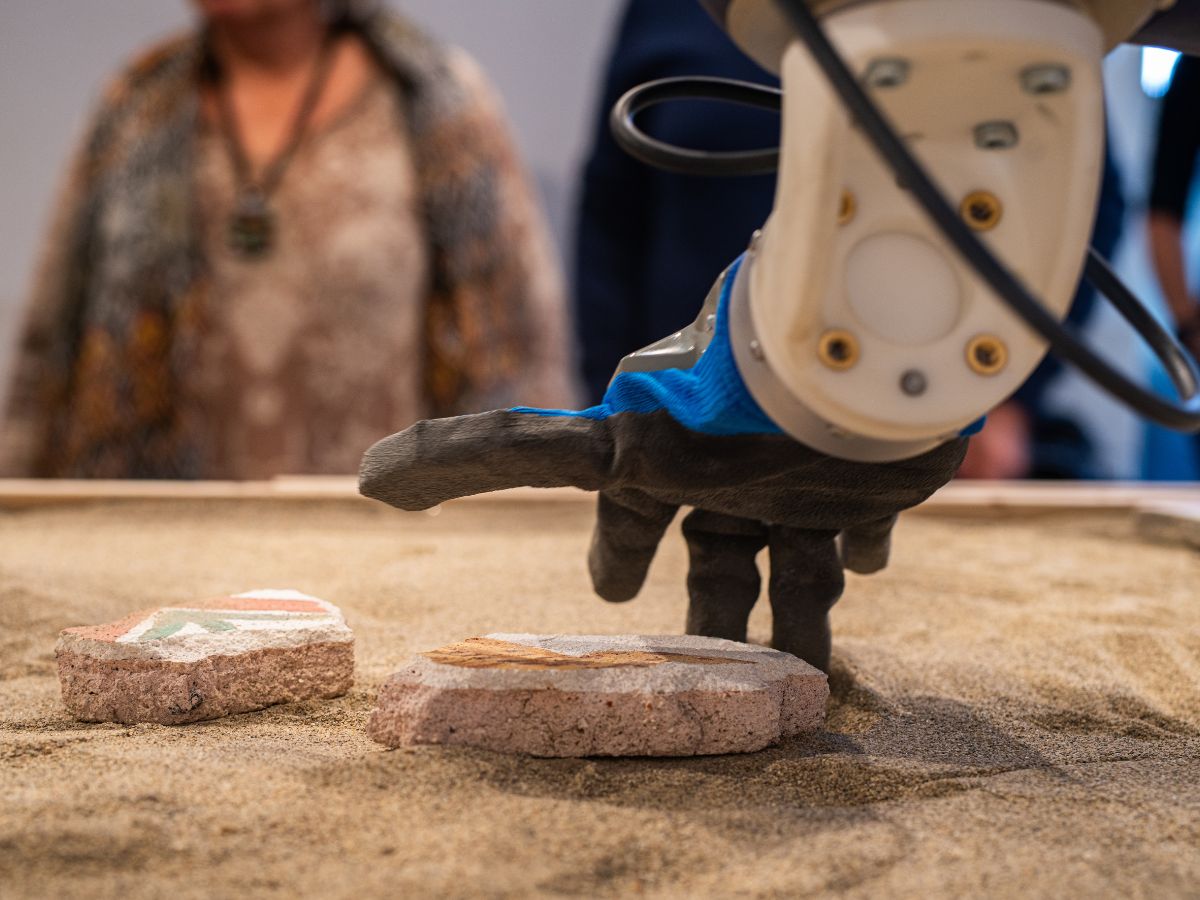IIT on show at the Universum Museo de Las Ciencias in Mexico City. Interview with Riccardo Villari.
The exhibition ITALIA: L’ARTE DELLA SCIENZA (Italy: The Art of Science) was inaugurated on Thursday 9 September 2021 at the Universum Museo de Las Ciencias in Mexico City. The exhibition is part of the collaboration between Città della Scienza and the Italian Embassy in Mexico, and of the activities promoted by the Embassy to endorse Italian scientific culture abroad.
“The scientific ties between Italy and Mexico are tangible and diverse, as demonstrated not only by the wealth of joint projects funded under various bilateral agreements, but also by the important presence of Italian researchers in Mexican scientific institutions”, said Emilia Giorgetti, Scientific Attaché at the Italian Embassy, in a conversation with IIT OpenTalk.
Through the display of objects, videos, texts and in-depth studies, the exhibition presents the public some paradigmatic results of research on strategic and topical themes: the environment, aerospace, food, the cultural heritage and health, dedicating space to the most concrete applications, but also to the crossover interaction amongst different subject areas, such as design, represented by the transversal presence of products from the Compasso d´Oro Collection belonging to ADI, Associazione Disegno Industriale (Industrial Design Association).
“The Foreign Ministry (MAECI, Ministero degli Affari Esteri e della Cooperazione Internazionale, Ministry of Foreign Affairs and International Cooperation) has a strong belief in scientific diplomacy as an effective means of strengthening international relations and as an essential method for promoting our country’s image and excellence worldwide. This is shown by the existence of an extensive network of Scientific Attachés in the main embassies, whose size has almost doubled over the last two years,” added Emilia Giorgetti.
The spirit of the exhibition is to describe the contribution made by the communication of science in Italy, through its major players: science museums, and the world of research and innovation, including CNR, the main partner, in addition to ASI and IIT.
“We believe that the narration of science is a sort of soft power particularly suited to conveying the image of Italy, not only as a cultural heavyweight but also for its real identity: an important technological player. One just has to remember that in a country such as Mexico, which is our second largest trading partner in the American continent after the USA, the two principal classes of products that we export are industrial machinery and pharmaceuticals,” concluded Emilia Giorgetti.
Above all, IIT was present in the section dedicated to health with the Hannes artificial prosthetic hand, winner of the 2020 XXVI ADI Compasso d’Oro award, and in the art section in which the three R1 and iCub robots can be seen in operation: they took part in the Dolce&Gabbana Autumn-Winter 2021/22 Women’s Fashion Show, with interviews held on that occasion with Giorgio Metta, IIT’s Scientific Director, Barbara Mazzolai, Associate Director of the Robotics Area, and Lorenzo Natale, Principal Investigator of the Humanoid Sensing and Perception research topic. In this celebration of Italian creativity and flair, the world of Made in Italy had to be present with its many facets, ranging from fashion to cutting-edge research in the field of robotics.
The entire project was coordinated by the Fondazione IDIS – Città della Scienza in cooperation with Museo Universum. The contents were curated and developed by four Italian Science Museums: Città della Scienza in Naples, the Museo Galileo in Florence, MUSE – Museo delle Scienze in Trento and the Museo Nazionale della Scienza e della Tecnologia Leonardo da Vinci in Milan.
Riccardo Villari, President of Città della Scienza, how did this collaboration with the Italian Embassy in Mexico come about?
‘Italy: the Art of Science’ is part of the activities for publicising Italian scientific culture abroad promoted by the Italian Embassy in Mexico, involving the most important Italian and Mexican institutions for communicating science. The exhibition is part of the cooperation between Città della Scienza and the Italian Embassy in Mexico, which has given rise to other important operations such as ‘Materica: la scienza come (non) te la immagini’, namely ‘Material: science as you would (never) have imagined it’, a photographic exhibition on the latest materials of fundamental interest for the environment and energy, and international events on climate change. This collaboration is part of the work performed by Città della Scienza’s international activities designed to support the work of Italy’s diplomatic network worldwide.
The global promotion of Italian research: is this your objective?
The spirit of the exhibition is to describe the remarkable contribution made by Italian science, research and innovation. The project’s leitmotif was in fact the CNR – Consiglio Nazionale delle Ricerche (National Research Council), whose cooperation enabled us to include some of Italy’s finest examples of scientific excellence in the show. The partnership with ASI, the Italian Space Agency, and the contribution made by the Italian Institute of Technology and various universities, were also fundamental. Further added value was offered by the many useful contributions from young researchers and start-ups, veritable forges of innovation in the research system, the perfect expression of a dynamic and forward-looking Italy.
How did you choose the themes featured in the show?
By means of the exhibits selected, we wanted to describe some emblematic results on topics of great interest: the environment, aerospace, food, cultural heritage and health, giving space to research and its most concrete applications, but also to the crossover between different subject areas, for example the interaction with design, represented by the inclusion of the ADI Industrial Design Association, which is transversally present in the exhibition with products from the Compasso d’Oro Collection. The result is a multifaceted picture that reflects how these different sectors influence each other and are thus a constant source of innovation and inspiration for further areas of research. But there are also references to Italian style and Made in Italy, a true cultural and lifestyle model for the rest of the world. In short, in this exhibition, art and science go hand in hand, in a continuous exchange of knowledge and reflection which, on one hand, is the legacy of the scientific and creative thinking that has made Italy great throughout history, while on the other, it anticipates a trend of continuous growth of synergies amongst fields that will be increasingly close and interconnected.
The Italian Institute of Technology was chosen for the Hannes prosthetic robotic hand and as an example of the cooperation between art and science. How does it fit into the exhibition sequence?
The Italian Institute of Technology in Genoa is famous for its excellence in the field of humanoid robotics, but it is equally renowned for its receptive approach to contributions from other areas of research. So it is a good depiction of the multidisciplinary combination that underlies the approach with which we selected the experiences presented in the exhibition, embodying the ‘Renaissance spirit’ that can still be seen in Italy today, renewing the link between technology and culture, and between science and art. The Hannes artificial prosthetic hand was designed to be as close as possible to a natural hand, and it is capable of performing 90% of its functions, by virtue of a multidisciplinary team of engineers and technicians specialising in mechanics, electronics, mechatronics, biomedicine, neuro-engineering and programming. The entire design, both in terms of visual appearance and its mechanical and structural characteristics, is in fact the result of an in-depth study of the natural hand’s anthropomorphic features, so that the prosthesis is not perceived as an extraneous tool. The Dolce & Gabbana fashion show with the iCub and R1 robots, the result of research by the Italian Institute of Technology in Genoa in the field of Artificial Intelligence, represents an original collaboration between high fashion and advanced science, in which robotics becomes art, an allegorical key to a future in which people and robots walk alongside each other.





